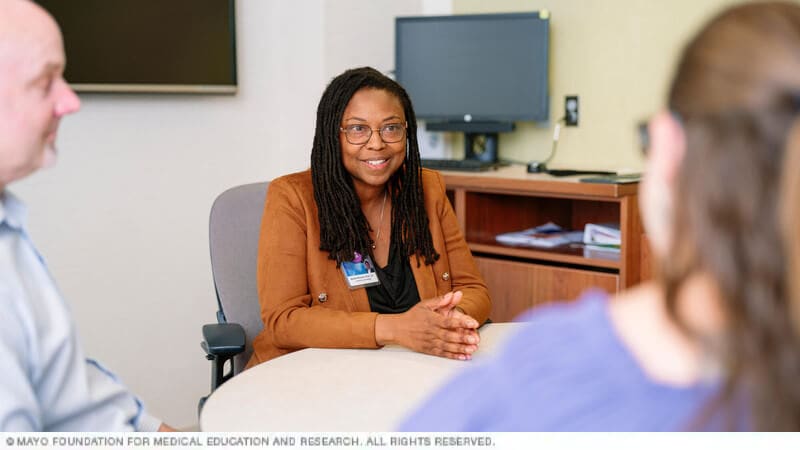Overview

For 50 years, Mayo Clinic’s Pain Rehabilitation Center (PRC) has been helping people with chronic pain return to a more active lifestyle. Teams based at Mayo Clinic’s campuses in Arizona, Florida and Minnesota use a rehabilitation approach that incorporates behavioral, physical and occupational therapies to help people with chronic pain restore physical activities and improve quality of life. The program also helps participants eliminate the use of pain medications and decrease the use of other medications that can impact health and quality of life in the long run.
The Rochester, Minnesota, campus also offers the adolescent-focused Pediatric Pain Rehabilitation Center.
Integrated, team-based care

At each campus, the PRC is staffed with an integrated team of healthcare professionals trained in many areas, including pain medicine, physical therapy, psychology, occupational therapy, biofeedback and nursing.
PRC programs assist participants in gradually eliminating the use of pain medications and other symptom-based medications using a structured taper. Individuals who are not taking pain medications also may benefit from review of their medications during their participation in the PRC.
Through the support of staff and peers in the PRC, participants regain strength and stamina and shift away from a focus on pain and symptoms toward a focus on what they value in life.
PRC program essentials
The Pain Rehabilitation Center (PRC) at Mayo Clinic’s campuses in Arizona, Florida and Minnesota provides a three-week program for adults.
- Pain sensitization education.
- Empirically supported psychosocial and rehabilitative self-management approaches to calm an overactive nervous system.
- The program goal is to promote functional improvement and quality of life.
People come to Mayo Clinic’s Pain Rehabilitation Center with many different types of chronic pain and conditions. Examples include:
- Abdominal pain.
- Central sensitivity syndromes.
- Chronic back pain.
- Chronic fatigue.
- Complex regional pain syndrome.
- Fibromyalgia.
- Generalized pain or pain in multiple areas.
- Headaches, including migraines.
- Nerve (neuropathic) pain.
- Nonepileptic spells.
- Post-cancer treatment-related pain, such as with mastectomy.
- Postural orthostatic tachycardia syndrome (POTS).
- Upper or lower body pain, such as pain in the chest wall, jaw, face, pelvis or joints.
In addition to having chronic pain, some people have depression or anxiety. Psychologists provide group-based cognitive behavioral treatments and if appropriate can help identify a trained therapist close to a person’s home for care after program completion.